When you make purchases through links on this site, The Track Ahead may earn an affiliate commission. Also, these posts are based off my own experiences. I am not responsible for any action you take as a result of reading this. Learn More
Dead Car Battery
The car battery in my Toyota 4Runner recently lost its ability to hold a charge. Back in 2013, I purchased an OEM Toyota TrueStart battery from a Toyota Dealership in San Francisco. The battery has held up well until earlier this week where I couldn’t start my car anymore.
As I turned the key in the ignition, the starter clicked but the car wouldn’t start. The electronics in the car still worked, but it wasn’t quite running at full power. I began to troubleshoot and eventually figured out the battery was the issue. Here’s what I did to troubleshoot and replace the car battery in my 4th Gen Toyota 4Runner.
Materials
Changing out the car battery doesn’t require complex tools. A simple wrench or socket set will do, and of course the car battery itself. I prefer the socket wrench set because it’s quicker and easier than using a normal combination wrench. The deep sockets also help with the removal and installation of the battery hold-down bracket. A multimeter will be needed to check the voltage of the battery. Gloves will ensure you keep your hands clean and any corrosive chemicals off your skin.
Multimeter: Any multimeter will do; the essential part of the multimeter for the purpose here is the voltmeter. We will be checking the voltage across the positive and negative terminals of the battery.
Amazon.com: Etekcity MSR-R500 Digital Multimeter
– low price option
– largely reviewed, highly rated
– about $10 (affordable option)
Amazon.com: Craftsman 34-82141 Digital Multimeter
– reputable brand, well-reviewed
– multimeter that I use
– about $25-30 (but keep your eyes open for these dropping down to $10-$15 on sale at Sears)
Socket Set: A standard socket wrench set will do, but a set that includes deep sockets will help especially when bolting/un-bolting the battery hold-down bracket.
Amazon.com: EPAuto 45 Pieces 3/8″ Drive Socket Set
– affordable (about $30)
– well-reviewed on Amazon
– an essential tool set for everyday use (probably the tool that gets most use from me)
Gloves: This helps keep your hands clean when removing and installing a battery that has been sitting in your car for 5+ years. Imagine all of the dirt and grease that has been built up and waiting to get itself all over your hands. Furthermore, it may be likely you have corrosion at the battery terminals. It’s best not to be in contact with those corroded white crystals as it may be irritable to your skin. Gloves also help protect your skin just in case there is any battery acid that has made its way out of the battery housing.
Amazon Search Results: Nitrile Gloves
Car Battery: I really like sticking with OEM products, especially if there isn’t a consensus on any one particular product that is better than OEM. I went with a Toyota OEM TrueStart battery that carries an 84-month warranty.
Something to keep in mind on the 84-month warranty that Toyota offers:
– first 24-months free replacement
– 60-month proration for the remaining warranty
– for warranty to be valid, it must be redeemed at the same dealership the battery was purchased from
Since the battery failed when I had about 20 months left on the warranty, I would normally be receiving a prorated credit towards the new battery. However, since I was at a dealership in a different city instead of the dealership in San Francisco (where I purchased the battery from), I was told the warranty would not be honored. Because I was stuck with a dead battery, I had no choice but to purchase a new battery full-price.
If you’re planning to buy an OEM Toyota battery, try buying it at a location that you would be convenient for you in five years or so. I didn’t have that foresight when I bought the battery five years ago because I had the notion that Toyota would honor the warranty no matter which Toyota Dealership I went to. I thought wrong.
A lot of folks opt for aftermarket batteries, which can offer better performance especially with the AGM-type batteries. AGM batteries such as the highly popular Odyssey Red Top AGM Battery have better efficiency, are maintenance-free, deliver powerful starting amps, and provide you with longer reserve capacity for running electronics on your vehicle.
Testing Battery Voltage
While the car is not running, the battery voltage across positive and negative terminals should be 12.6 volts or higher. This indicates the battery is in good health. If it is lower than 12.6 volts, there may be a problem with the battery.
I tested the voltage across the two battery terminals with my multimeter and initially got 12.14 volts. However, after cranking the car a bit more, the voltage quickly dropped down to 11.92 volts. These voltage readings are below the standard voltage range for a healthy battery.
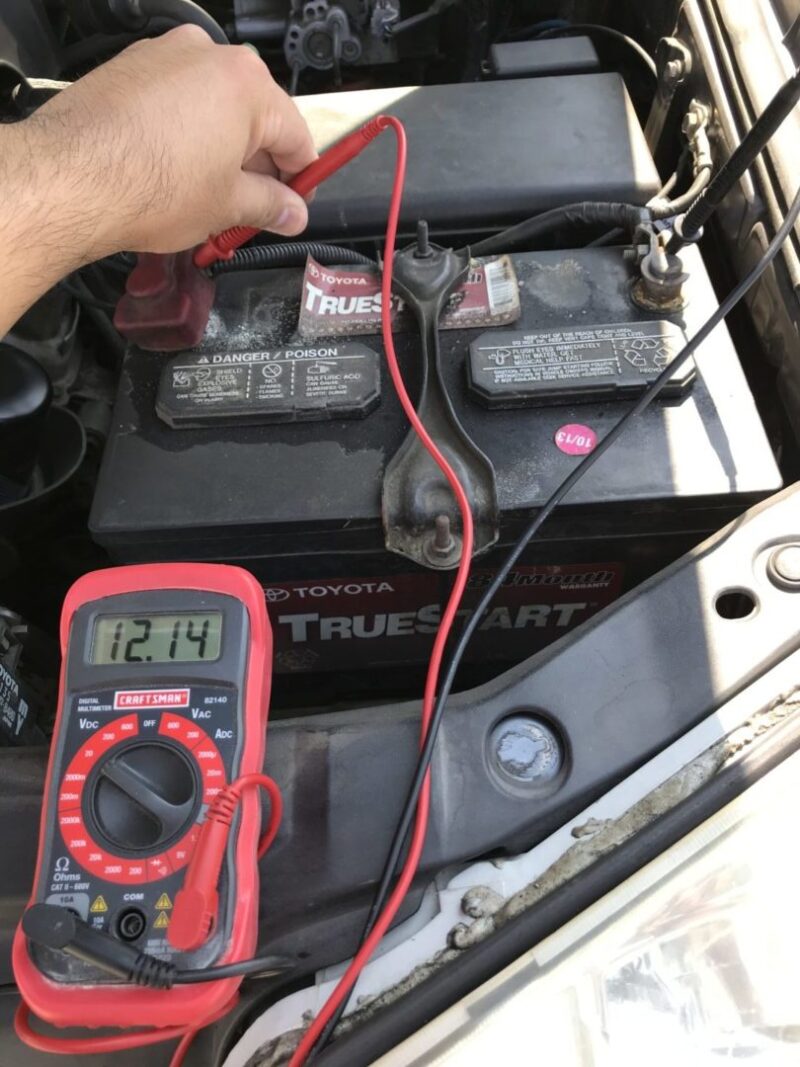
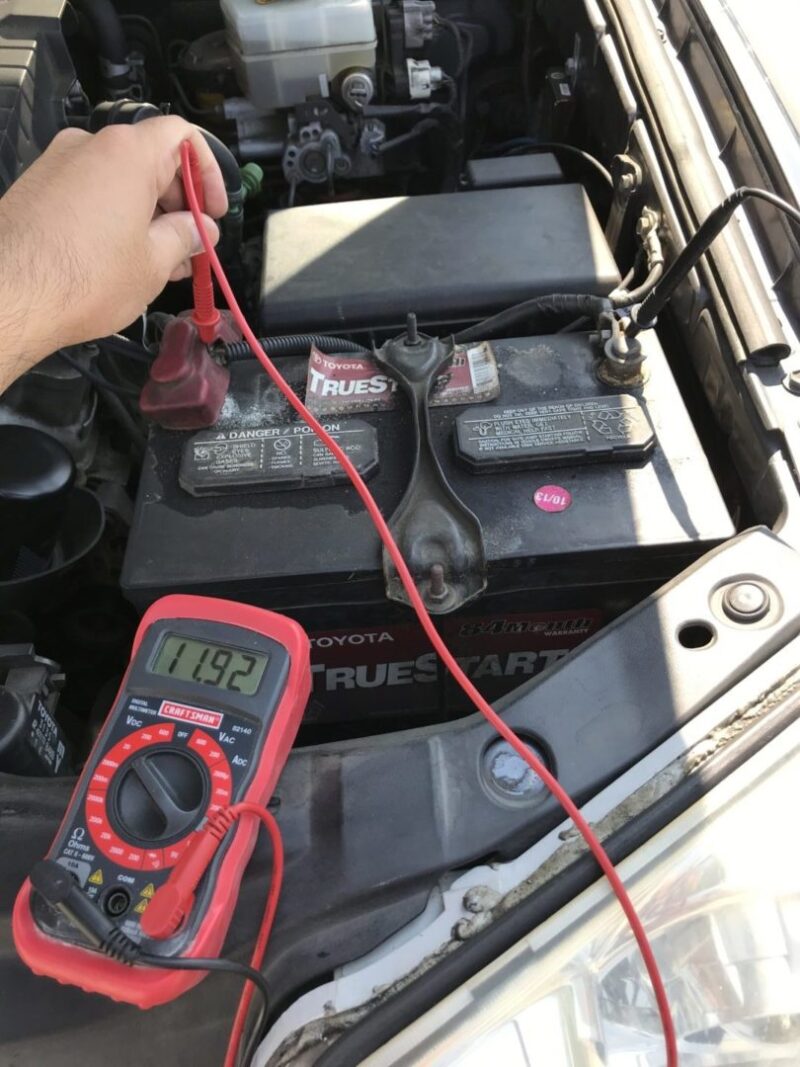
Car Battery Replacement
Remove the 10mm bolt for the battery ground and loosen the 10mm nut for the negative terminal lead. Remove the negative lead and move it to the side, ensuring it is secure and away from the negative battery terminal.
Then remove the 12mm bolt from the positive terminal and remove the positive terminal lead from the battery.
There is a significant amount of corrosion on my positive lead. A simple baking soda and water mixture with a steel brush will easily clean this off.
This is the part where the socket set prevails over a normal combination wrench. Deep sockets work wonders here; otherwise you’re stuck with turning these 10mm bracket bolts with a wrench for days.
The bracket is held down with 10mm nuts over these long hooked bolts. After removing this bracket and the two hooked bolts, you can now remove the old battery.
The new battery next to the 5-year old battery.
Make sure there is nothing in the way before installing the new battery. The last thing you want is to fiddle around with any wiring while trying to get the heavy battery onto the battery tray. Even worse is if that battery pinches (and potentially breaks) any wiring.
Since I replaced the battery right outside of the Toyota Dealership, I used their battery holder. This makes it a lot easier to hold and carry the heavy battery. But if you don’t have a clamp holder, the battery can still be lifted and lowered into the engine bay easily. Just be careful of the pinch points when lowering the battery into the engine bay.
New battery in place. Be aware of the orientation of the battery when you drop it in and on which side the positive and negative leads are.
Now put the battery hold-down bracket in place. Hook the long bolts into the holes at the base, and then secure the bracket in place.
This is the bracket at the base of the battery on the other side. I wish I had an extra hand to hold all of these together, but it’s not terribly difficult to handle.
Tighten up the 10mm hold-down bracket bolts and ensure the battery is held down securely. Finally, reconnect the positive terminal with the 12mm bolt and then last, the negative terminal and ground (both 10mm bolts). Hand-tighten these bolts down taking care not to over-tighten. There’s no need to tighten these bolts any more than snug.
And there you have it, a new battery that should last another 5+ years.
Lastly, I tested the battery voltage again with the engine off. The multimeter read 12.42 volts (which although is lower than the 12.6 volt value for a healthy battery), is sufficient considering it is a new battery. After driving the car and allowing the alternator to charge the battery up to full charge, the battery voltage later read over 12.6 volts.


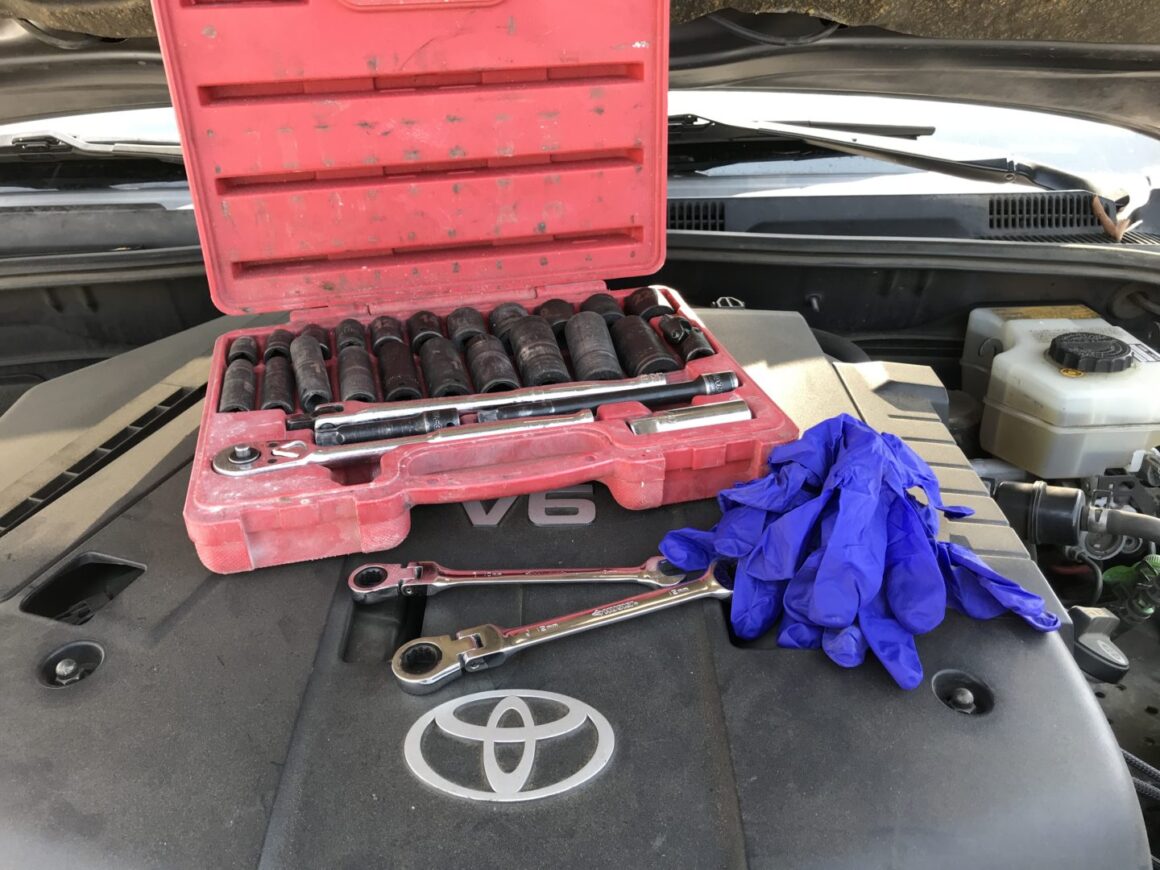
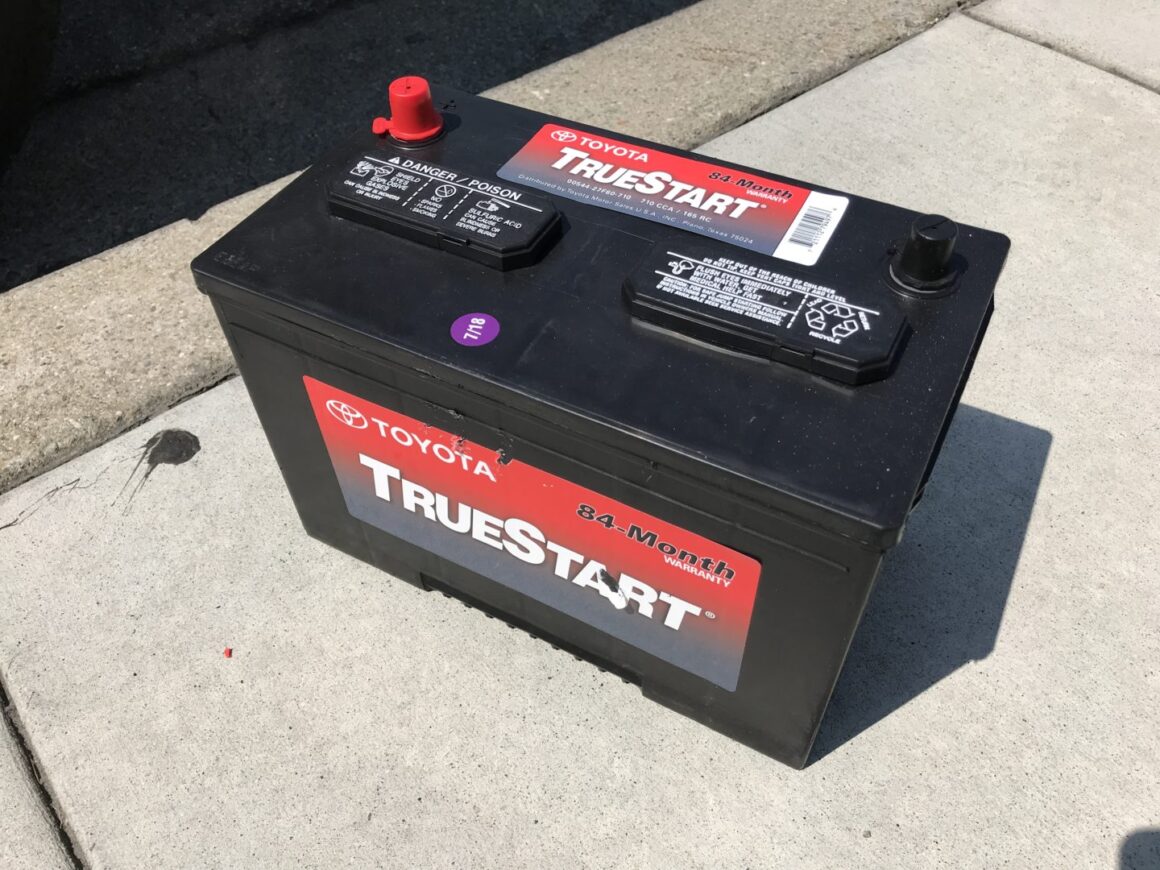

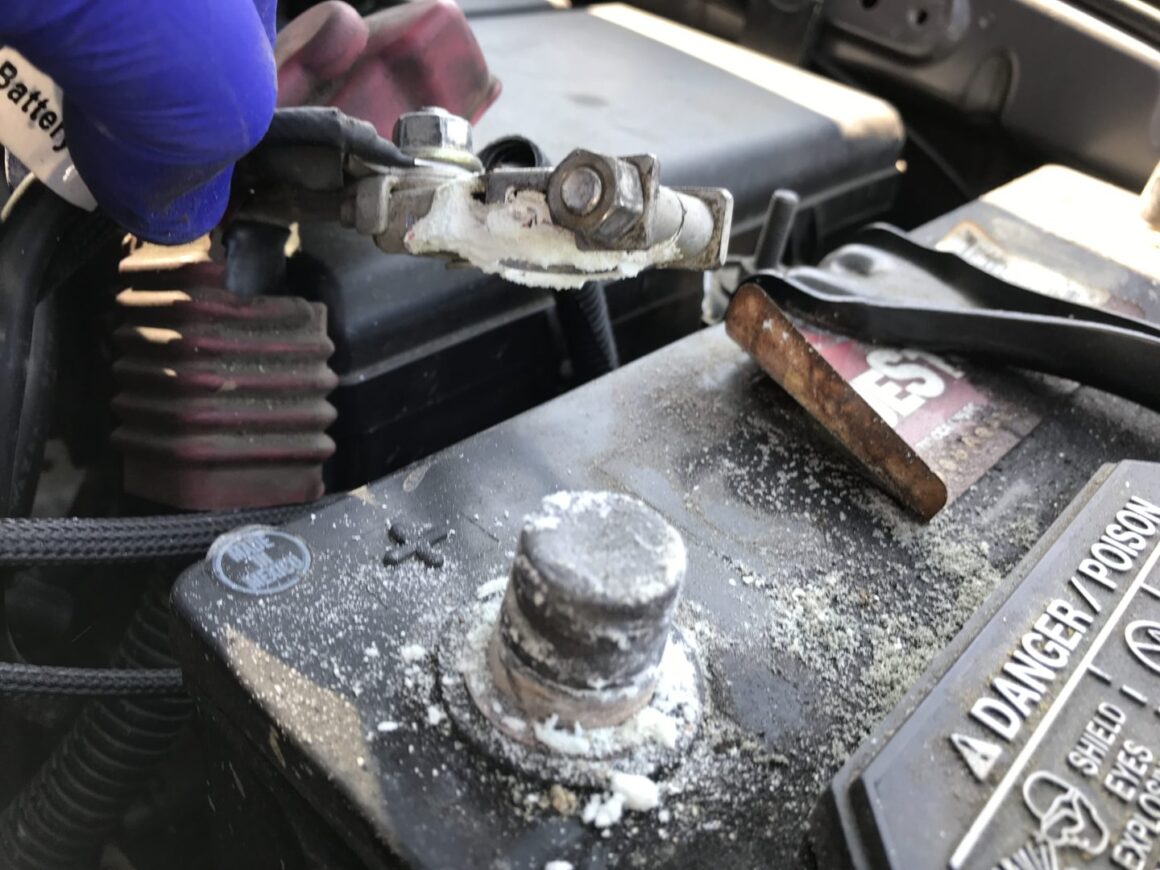
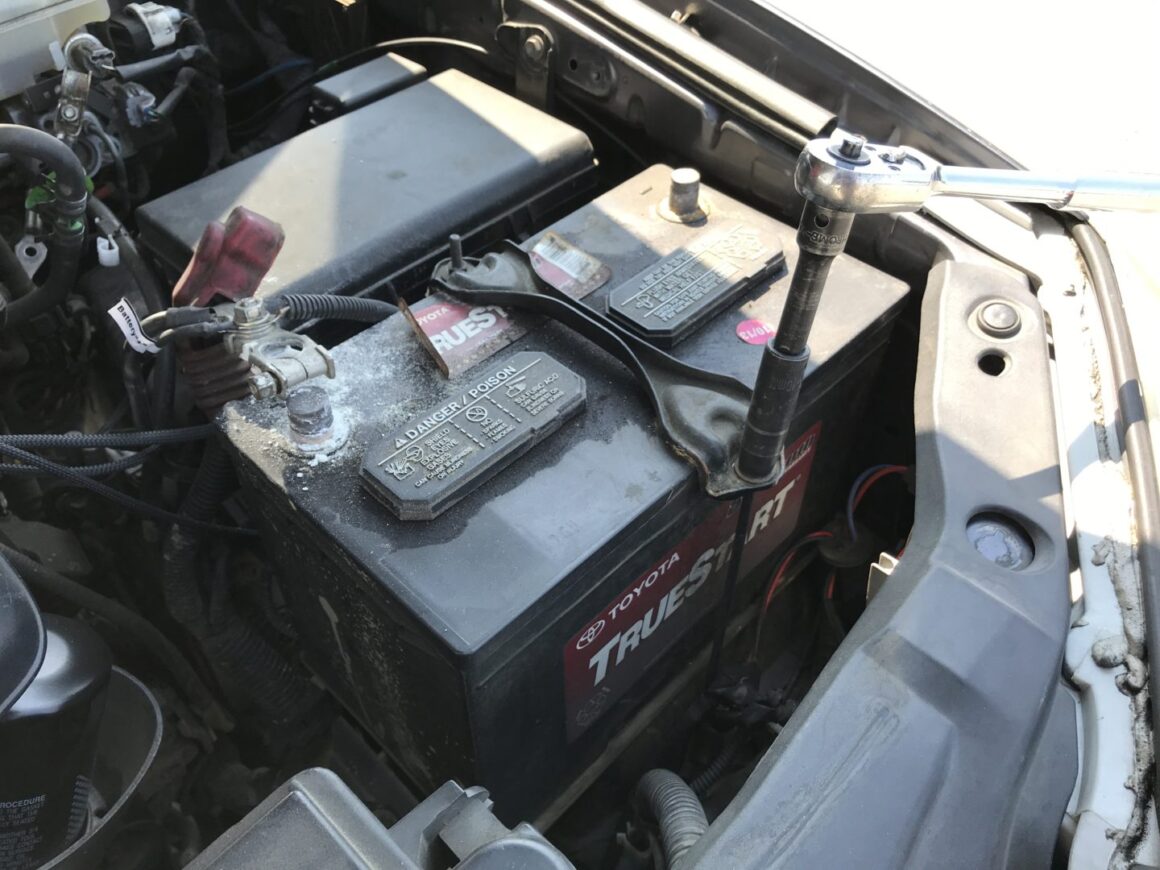
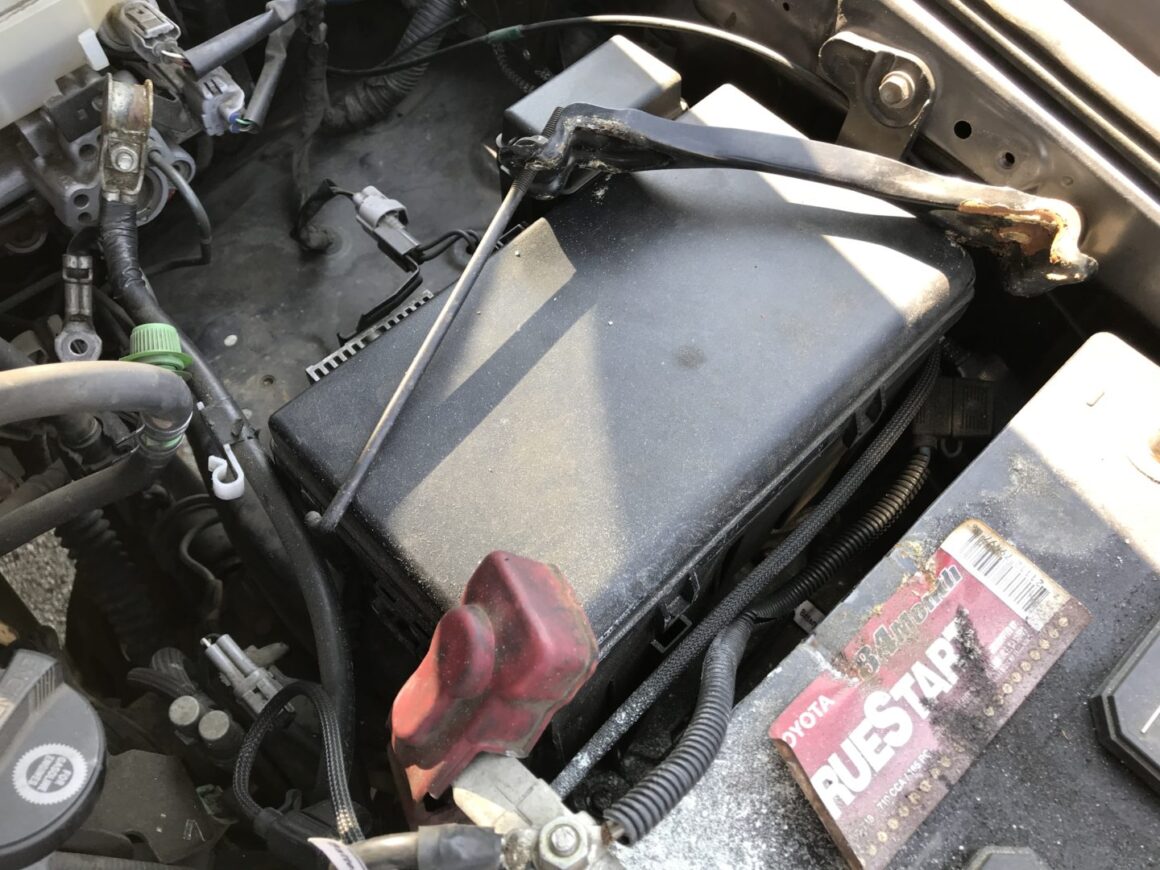







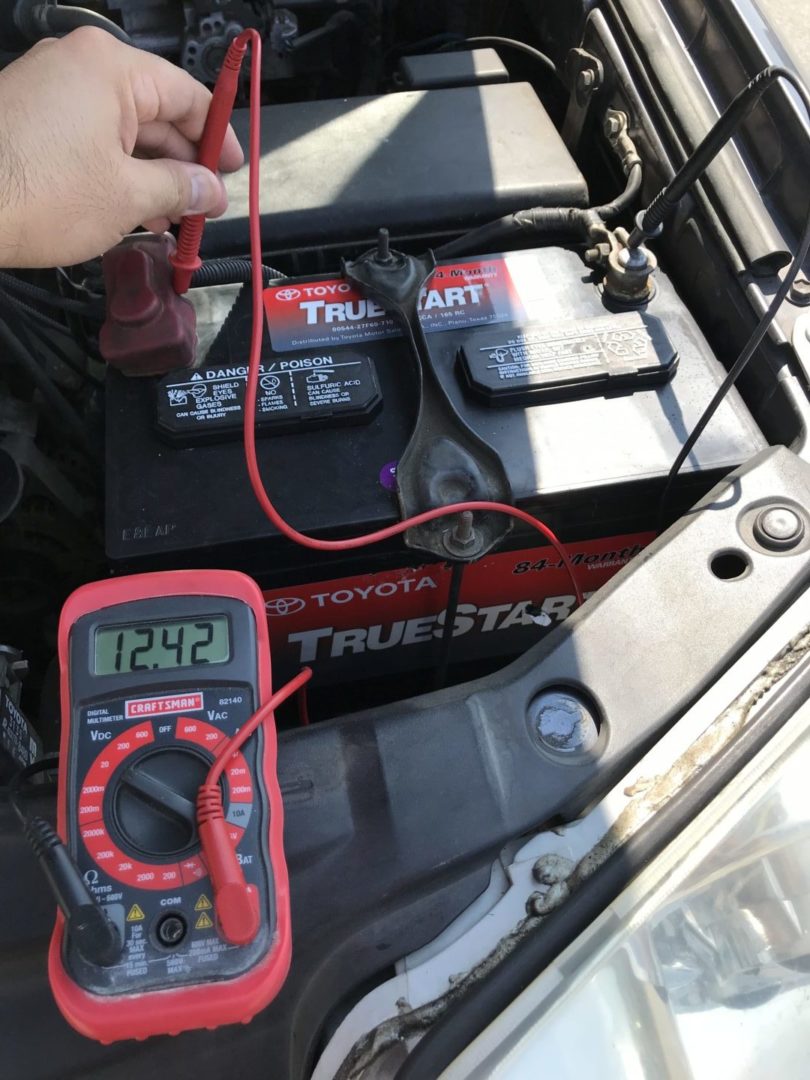









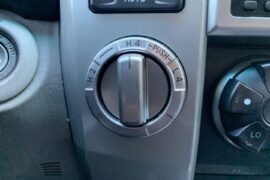
2 Comments
Hi Scott, Did you use a memory saver to retain any of the vehicle settings like the window auto features, radio presets, mpg readouts, etc? If not, did you have any issues after putting the new battery in? Just curious because I have found a lot of conflicting information with regard to that… Thanks for a good write-up!
I honestly have never heard of a memory saver (not sure if that’s something you program or physically set to save memory.) I was always under the impression that if you disconnect your battery, you just have to deal with re-setting all of those things. After replacing the battery, as well as the many times I’ve changed out the battery, I had to set everything again but no issues to report.
I’m curious, what kind of issues have you heard of happening? Thanks for the comment!